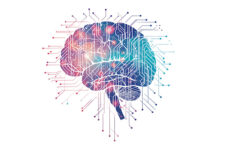Friday 5: Virtual field trips
While virtual field trips are not a new phenomenon, they gained popularity shortly before COVID due in part to their ability to expose students to places and experiences they may not otherwise access.
Google, MIT RAISE launch no-cost AI training course for teachers
Google and MIT RAISE have announced a no-cost Generative AI for Educators Course designed to help teachers use generative AI tools to personalize instruction.
4 ways to encourage play in education
As a longtime educator, I’ve witnessed firsthand the incredible benefits that play can have in a K–8 classroom. Unstructured play is how students learn to interact with the world around them.
CoSN IT Leader Spotlight: Lisa Higgins
In partnership with CoSN, eSchool News is highlighting the innovative and dedicated work of IT leaders in school districts across the country.
It’s time to pay student teachers
I fell in love with teaching while working as an assistant educator at a preschool 16 years ago. I had not studied education, so I enrolled in an alternative certification program.
The evolving requirements of a K-12 school network
As the school year began this year, the White House announced several initiatives to curb cyberattacks on K-12 schools. This was in response to a 2022-2023 school year that saw eight major cyberattacks.
A bungled FAFSA rollout threatens students’ college ambitions
Christian Rojas Linares can’t finish his financial aid forms because he’s been blanketed with error messages. The New York City high school senior has even received incorrect emails telling him his application was canceled.
How digital tools and AI can enhance social studies
Social studies education serves as the cornerstone for cultivating informed and engaged citizens capable of understanding the complexities of the world around them.
4 ways to support work-based learning
As work-based learning models grow in popularity, a new report from the Center for American Progress (CAP) highlights key themes in recently-passed state legislation that will support efforts to expand or improve such models.
Prioritizing inclusivity in game-based learning
Applying the principles and practices of inclusive design in game-based learning can expand access to rich learning experiences to a neurodiverse group of learners, according to a new whitepaper from Kahoot!.










